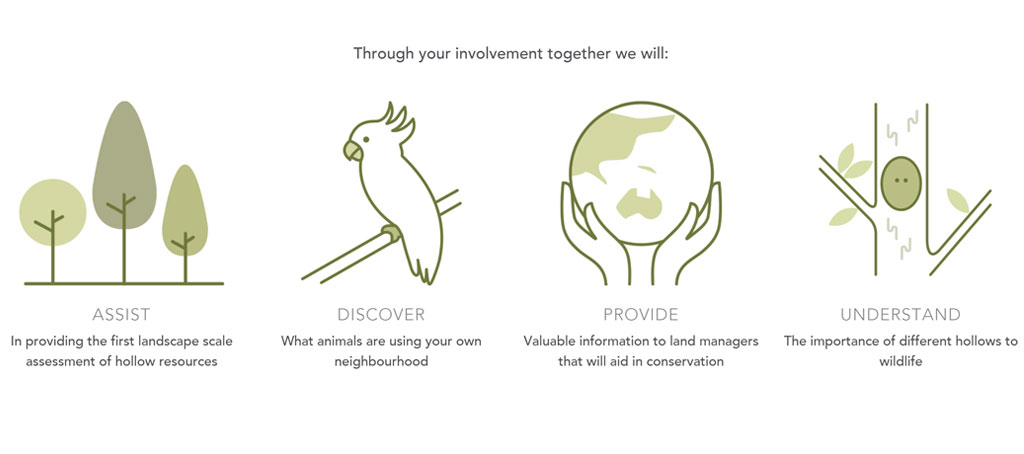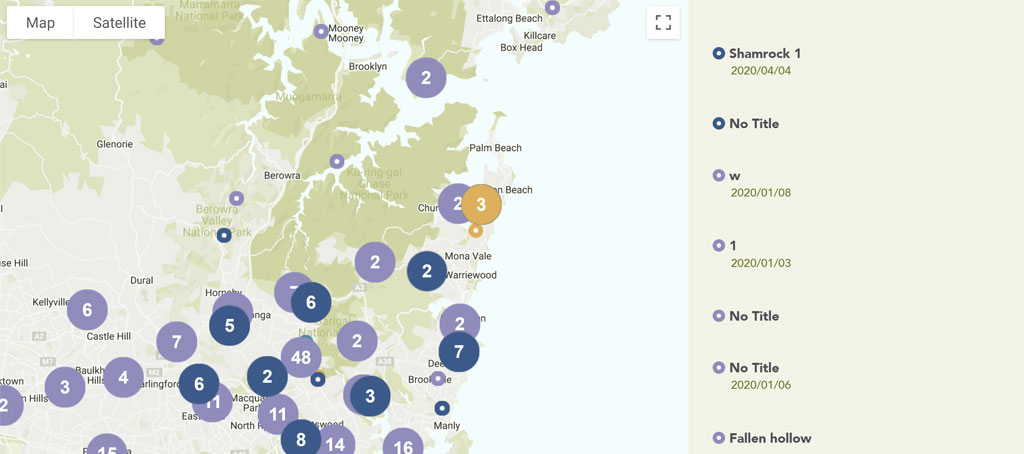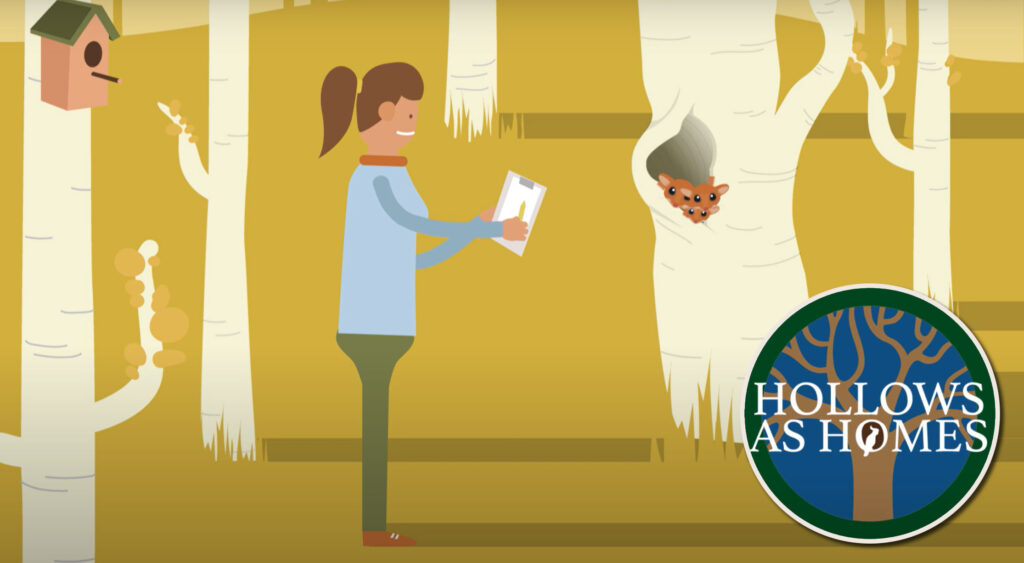Hollows as Homes is a wonderful new initiative sponsored by The Royal Botanic Gardens Sydney. The project aims to conduct the first landscape scale assessment of tree/nest box/cut-in hollow distribution, type and wildlife use with the help of community scientists and enthusiasts.
The project works with the community and land managers to assess tree hollow availability, as hollows are an important but limited resource for wildlife in urban and agricultural areas.
There are 4 key objectives of the project:
- Assist in providing the first landscape scale assessment of hollow resources
- Discover what animals are using your own neighbourhood
- Provide valuable information to land managers that will aid in conversation
- Understand the importance of different hollows to wildlife

From the Hollow for Homes Website
“So important are tree hollows to our native wildlife, that their loss has been classed as a Key Threatening Process to biodiversity throughout Australia. One reason that their loss is significant is the length of time that it takes for a tree hollow to form. In Australia, there are no animals that are able to create tree hollows (e.g. wood pecker in much of the rest of the world), thus hollow creation is a slow process that relies on fungus to eat away at the tree. In some instances hollow creation is assisted by animals chewing to remove decayed wood (e.g. Cockatoos). In general, it can take decades for hollows to form, which is why large hollows, suitable for big animals such as possums, cockatoos or owls, are found in older, larger trees.”
It’s easy to get involved and help. Simply visit the Hollows for Homes website here: https://www.rbgsyd.nsw.gov.au/hollows-as-homes/hollows-as-homes , where you can register and start recording tree hollows and homes in your area. The data is shared in a simple Google Map, showing what has been recorded to date.

At Canopy Keepers we are so excited to see this initiative launched. As a local community group, motivated and committed to protecting tree canopies and the myriad of ecosystems they support, we think Hollows for Homes can become a powerful resource for our local environmental protection efforts. Big thanks to Dr John Martin from the Sydney Botanic Gardens and all the other good people that have made this happen. Let’s get involved Pittwater!!



